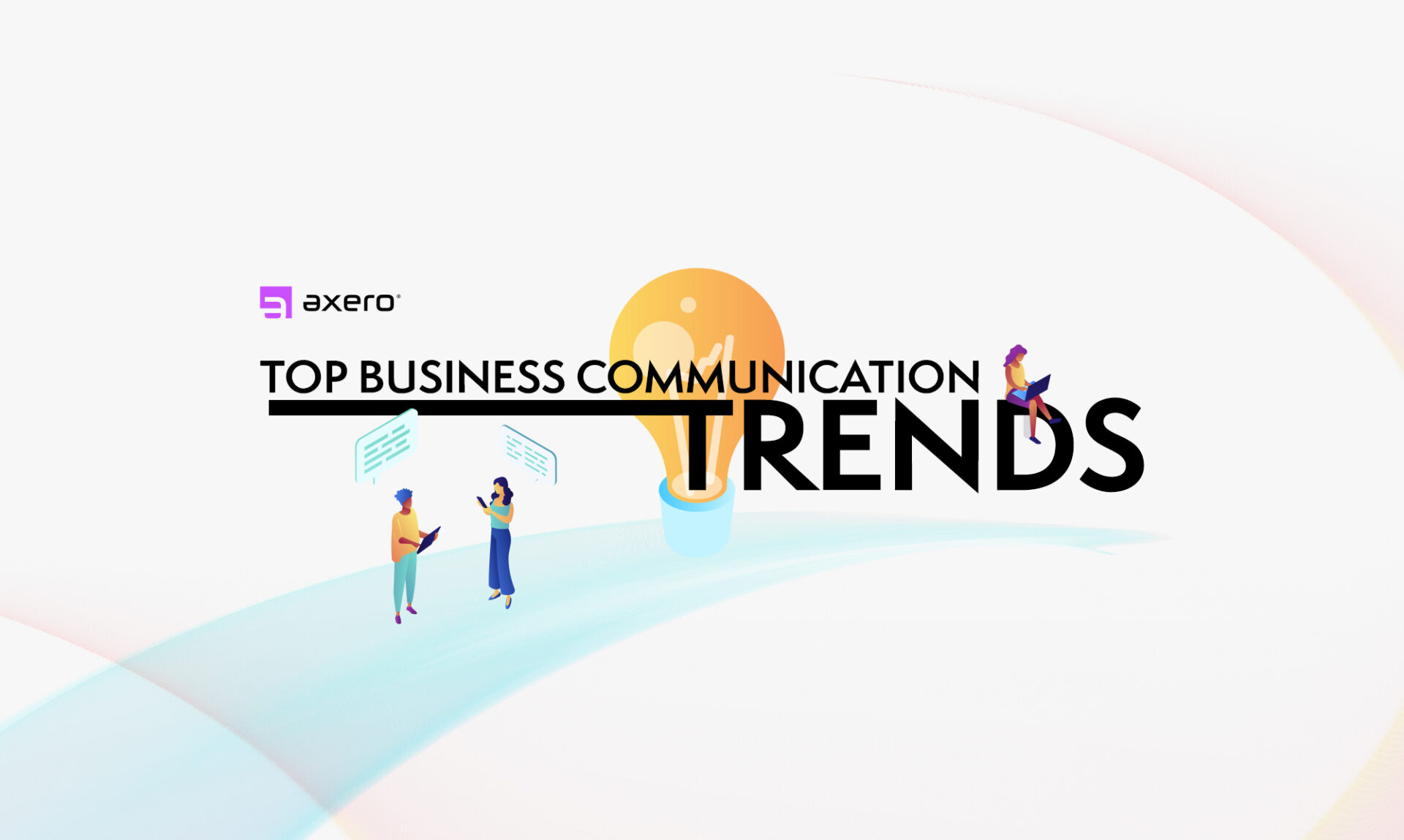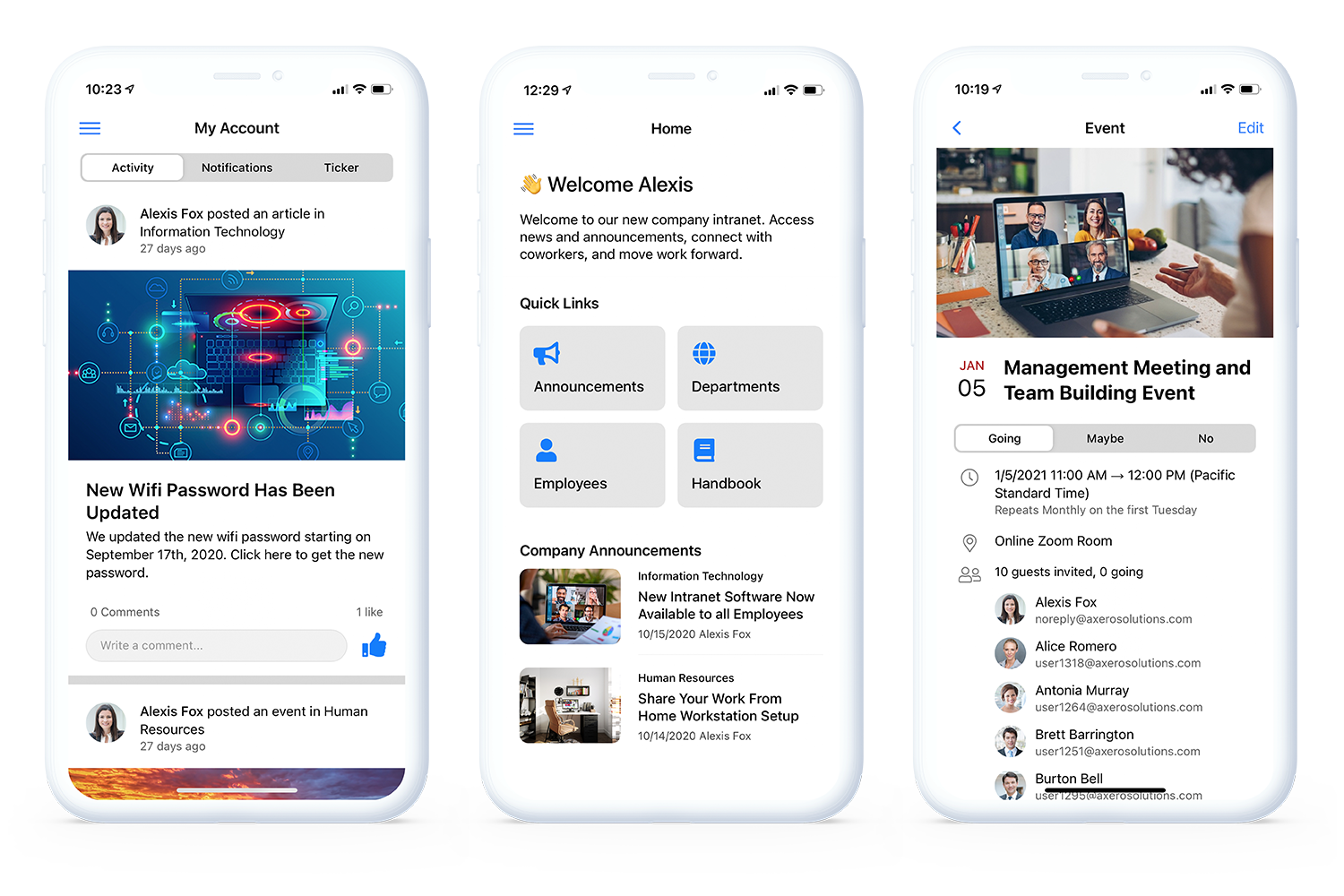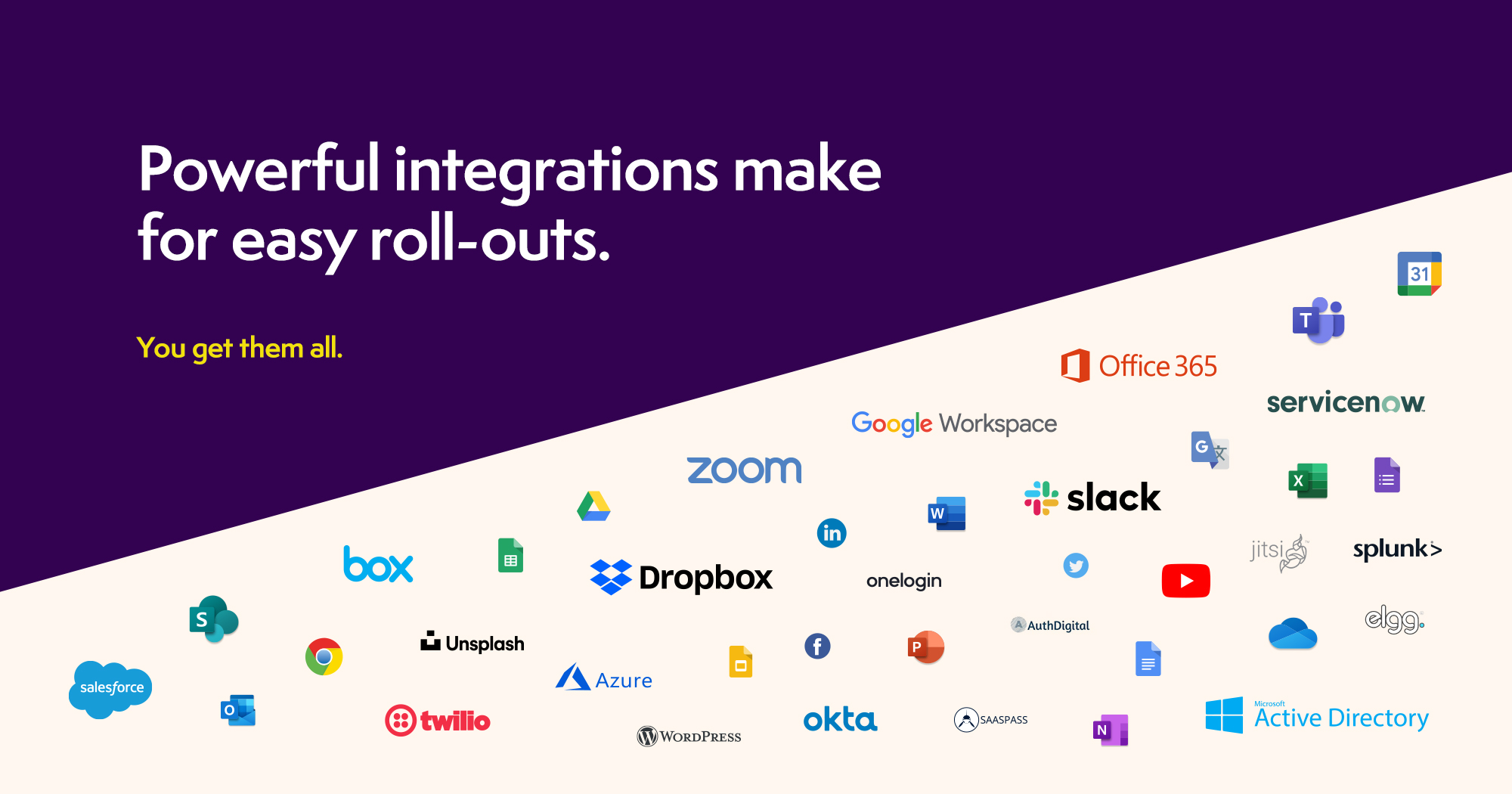In the last decade, business communication technology has evolved drastically. Tools and communication trends have pivoted away from email and shifted towards personable, targeted ways to reach employees, with emerging trends playing a crucial role in this evolution. It’s important to recognize these communication trends because the ability to evolve and adapt is imperative for companies that want to maintain thriving workplaces.
If you want to explore ways to stay competitive, you will need to embrace emerging technology that improves communication. That’s why we compiled this list of the top 10 business communication trends, so you know what you need to be doing right now to be ready for the future.
So, what are some of the trends taking place today that are used to improve communication at work?
- Understanding Recent Trends in Business Communication
- Top 10 Business Communication Trends for 2025
- How to Enhance Internal and External Communication
- Tools and Technologies Shaping Communication
- Driving Business Success with Effective Communication
- Future-Proofing Business Communications
- Embracing Advanced Business Communication Trends
- Leveraging Axero Intranet Platform
What is Business Communication?
Business communication is the lifeblood of any organization, enabling the seamless exchange of information and ideas among employees, stakeholders, and customers. Effective business communication hinges on using the right communication channels, tools, and strategies to convey messages clearly and efficiently to the target audience.
Internal communication is particularly important for building a positive work environment, fostering collaboration, and driving business success. Business leaders must prioritize communication to ensure that all stakeholders are informed, engaged, and aligned with the company’s values and goals. This involves leveraging digital communication tools such as phone calls, video conferencing, and instant messaging, which have revolutionized the way businesses communicate.
Current communication trends, such as asynchronous communication and mobile-first communication, are reshaping how businesses interact with their audiences. Internal communicators play a pivotal role in developing and implementing effective communication strategies that drive employee engagement and productivity. To remain competitive, businesses must stay up-to-date with the latest communication trends and technologies.
Communication security is another critical aspect, essential for protecting sensitive information and preventing data breaches. By leveraging automation, artificial intelligence, and data analytics, businesses can streamline their communication processes and improve workplace productivity. Ultimately, effective business communication enables employees, stakeholders, and customers to connect meaningfully, driving organizational success.
Understanding Recent Trends in Business Communication
Recent trends in business communication, including current trends, have transformed how companies operate. You may have noticed this. Leveraging communication tools like AI-driven platforms, mobile devices, and cloud-based communication solutions is essential for effective communication within organizations.
Top 10 Trends Shaping Business Communication in 2025
Want to know the top trends for business communication this year? Let’s jump right in.
1. Modern intranet software.
Intranet software, or a digital workplace solution, is the number one business communication tool that thriving organizations rely on. In fact, according to Gartner reviews, intranet platform Axero has been a “gamechanger” for businesses. Businesses need a place to access centralized content, data, and people, to work effectively. This trend has been fuelled by the benefits of social media, advancing mobile devices, and the rise of remote work. With a modern intranet, all of your communications, documents, and people are in one always-accessible place.
From activity streams, notifications, and likes and comments, to blogs, wikis, and collaboration tools, today’s intranet software is people-centric with social features that users are familiar with. They also offer a more convenient way to collaborate—everybody can communicate and share ideas from anywhere, while contributing towards and feeling like a community.
2. Hyper-personalization
Personalizing communication through data analytics enhances customer interactions and customer satisfaction. Tailored messaging helps businesses resonate more deeply with their audience, building a sense of loyalty and promoting repeat business.
3. Generative AI
AI technologies like natural language processing and chatbots are streamlining customer communication. These tools improve responsiveness and efficiency, making them invaluable for handling customer inquiries and enhancing the overall customer experience. Additionally, integrating intranet chat features can facilitate seamless internal communication, further boosting productivity and collaboration within teams.
4. Unified Communications
Integrating multiple communication channels, such as video conferencing, messaging apps, and cloud-based communication tools, ensures seamless and efficient communication. This integration supports team productivity and maintains a consistent flow of information.
5. Internal and External Communication Alignment
External and internal communication teams must work closely to address communication trends and ensure smooth interactions. Implementing clear communication protocols and utilizing internal communication channels, supported by robust internal communication software, can drive desired business outcomes.
6. Collaboration Tools
Utilizing collaboration tools like Slack, Trello, and Microsoft Teams facilitates effortless cross-functional collaboration. These tools are essential for improving team productivity and ensuring that all employees are engaged.
7. Mobile-first Communication
Embracing mobile devices for business communication allows teams to communicate effectively on the go. Mobile-first communication strategies are crucial for adapting to the evolving digital landscape. Utilizing mobile intranet software enhances connectivity and collaboration, ensuring that team members stay informed and engaged regardless of their location.
 8. Video Conferencing and Virtual Meetings
8. Video Conferencing and Virtual Meetings
Video conferencing and virtual meetings platforms like Zoom, Google Meet, and Microsoft Teams are indispensable for video calls and virtual meetings. These tools support real-time communication and foster strong team dynamics, especially in remote work settings.
9. Customer Experience Focus
Prioritizing customer satisfaction through sustainability communication and addressing social and environmental issues is essential for business success. Implementing communication strategies that align with customers’ values can significantly drive positive business outcomes. By demonstrating a commitment to these values, businesses can foster stronger customer relationships and loyalty.
10. Innovations and Adaptations
Continuously exploring and adapting to new trends in business communication helps businesses stay competitive. This includes leveraging AI, cloud communication, and digital communication tools to enhance interaction with customers and employees. Implementing cloud intranet software can further streamline internal processes, ensuring efficient and secure communication across the organization (For instance, here’s how Axero’s Slack intranet integration works).
How to Enhance Internal and External Communication
Now you know the top ten trends for business communication in 2025, but the question is: how do you implement them in both internal and external contexts?
Internal communications play a crucial role in maintaining team communication and employee engagement. Effective internal team communication, supported by knowledge management tools, ensures that all employees are informed and aligned with the company’s objectives. Additionally, fostering strong team collaboration and incorporating a human touch into communication strategies.
External communication tools will help you to maintain positive relationships with external entities such as clients, partners, and vendors—these are crucial relationships for the success of your business.
Here are some important factors to take into consideration.
1. Cloud-Based Solutions
Cloud-based solutions are rapidly becoming the backbone of modern business communication, offering unparalleled scalability, flexibility, and cost-effectiveness. Cloud storage solutions like Google Drive and Dropbox enable teams to collaborate and share files securely, ensuring that everyone has access to the latest information.
Cloud-based software, such as Slack and Microsoft Teams, provides a centralized platform for communication, collaboration, and project management. These tools are indispensable for enabling remote work, allowing employees to access information and collaborate with colleagues from anywhere, at any time.
Moreover, cloud-based solutions offer valuable insights into communication patterns and trends, enabling businesses to refine their communication strategies. However, the use of cloud-based solutions necessitates a strong focus on communication security to protect sensitive information and prevent data breaches.
Integration with other communication tools and technologies, such as video conferencing and screen sharing, further enhances collaboration and productivity. Businesses must carefully evaluate their cloud-based solution needs and choose a provider that meets their specific requirements. By adopting cloud-based solutions, businesses can reduce costs, improve efficiency, and enhance customer satisfaction, staying ahead of the curve in a rapidly evolving market.
2. Communication Security
Communication security is a cornerstone of business communication, crucial for protecting sensitive information and preventing data breaches. Businesses must prioritize communication security to maintain trust with their stakeholders and prevent reputational damage.
Effective communication security involves using encryption, secure protocols, and access controls to safeguard sensitive information. Compliance with regulatory requirements and industry standards is also essential. Developing a comprehensive communication security strategy that includes employee training, incident response, and continuous monitoring is vital.
The use of artificial intelligence and machine learning can significantly enhance communication security by detecting and preventing threats. However, communication security is not just a technical issue; it also requires employees to be aware of and follow best practices.
Staying updated with the latest communication security threats and trends is crucial to ensure that security measures remain effective. Communication security is an ongoing process that requires continuous evaluation and improvement. By prioritizing it, businesses can protect their reputation, maintain stakeholder trust, and ensure the confidentiality, integrity, and availability of sensitive information.
3. Communication Methods
Business communication encompasses various methods, including verbal, nonverbal, written, and visual communication. Verbal communication involves face-to-face meetings, phone calls, and video conferencing, while nonverbal communication includes body language and tone of voice.
Written communication covers emails, reports, and instant messaging, while visual communication involves images, videos, and graphics. The choice of communication method depends on the audience, message, and context. Effective communication often involves using a combination of methods to convey messages and engage stakeholders.
Tailoring communication methods to the target audience’s preferences and needs is essential. Businesses must consider the pros and cons of each communication method and choose the most effective one for their purposes. Communication methods can be formal or informal, depending on the context and audience.
The advent of technology has expanded the range of communication methods available to businesses. By understanding the different communication methods and their applications, businesses can develop effective communication strategies that drive engagement and productivity.
There is a lot to consider here, but thankfully, there are tools that can help.
Tools and Technologies Shaping Communication
- Collaboration Tools: Utilizing tools like Slack, Trello, and Microsoft Teams facilitates cross-functional collaboration, boosting team productivity and engagement.
- Mobile-First Communication: Adopting mobile devices for business communication allows teams to stay connected on the go, adapting to the evolving digital landscape.
- Video Conferencing and Virtual Meetings: Platforms like Zoom, Google Meet, and Microsoft Teams support real-time communication, essential for remote work.
- Augmented Reality: AR technology enhances digital communication by providing immersive experiences, useful for customer interactions and screen sharing during virtual meetings.
Driving Business Success with Effective Communication
The benefits of staying up to date with effective communication tools cannot be understated. Here’s how it drives business success.
- Customer Experience: Prioritizing customer satisfaction through sustainability communication and addressing social and environmental issues is crucial for business success. Effective communication strategies can enhance customer interactions and drive business growth. Effective communication strategies are integral to a successful business strategy, driving growth and customer satisfaction.
- Competitive Edge: Staying updated with the latest trends in business communication and adapting to new technologies helps businesses maintain a competitive edge. Leveraging AI, cloud communication, and digital communication tools can improve interactions with customers and employees.
Future-Proofing Business Communications
Hopefully, you’ve got the memo by now: staying updated with technology trends in business communications is essential for maintaining competitiveness and achieving success. Leveraging omnichannel campaign management platforms, integrating advanced communication tools, and focusing on both internal and external communication strategies are key to this, especially in 2025.
ere’s a summary of the top business communication trends in 2025.
- Hyper-Personalization
- Generative AI
- Unified Communications
- Internal and External Communication Alignment
- Collaboration Tools
- Mobile-First Communication
- Video Conferencing and Virtual Meetings
- Augmented Reality
- Customer Experience Focus
- Innovations and Adaptations
Embracing Advanced Business Communication Trends
Harnessing Business Communication Tools
In today’s competitive market, business communication is evolving rapidly, driven by advancements in technology and changing workplace dynamics. Business communication trends are shaping how organizations operate, ensuring they remain agile and competitive. Business leaders must focus on leveraging the latest business communication tools to facilitate meaningful communication and achieve business objectives. These tools, including instant messaging apps and artificial intelligence, help streamline internal communication and enhance interactions with customers.
Navigating Internal Communication Channels
Internal communication is a critical aspect of workplace communications, ensuring that employees remain informed and engaged. Effective internal communication channels, such as instant messaging apps, workplace desktop computers, and other digital platforms, are essential for maintaining a seamless flow of information. These tools support multiple channels of communication, preventing disorganized communication and fostering a collaborative work environment. By prioritizing communication and utilizing flexible tools, businesses can ensure that their communication strategies align with their overall business objectives. Regular training sessions can help employees effectively utilize these communication channels. If you’d rather keep things simple with one powerful, all-in-one tool, however, it may be worth looking into an Intranet platform like Axero.
The Importance of Customer Data and AI
Artificial intelligence is revolutionizing how businesses interact with customers and manage customer data. AI-driven tools offer valuable insights into customer behavior, enabling businesses to make data-driven decisions. These tools also help in automating routine tasks, freeing up time for employees to focus on more strategic activities. By leveraging AI, businesses can enhance their communication priorities, ensuring that customer interactions are efficient and personalized. This not only improves customer satisfaction but also helps businesses stay ahead in a competitive market. AI-driven tools also help businesses understand and adapt to customer preferences, ensuring personalized and efficient interactions.
Leveraging Axero Intranet Platform
The most successful businesses don’t leave their communication strategy to chance. They use the best technology and keep on top of communication trends to stay ahead of the curve. This includes companies like Anytime Mailbox, which utilised Axero intranet platform…with impressive results.
Our organization is all about staying connected and in the loop, so we’ve chosen Axero as our go-to intranet platform. It’s designed to help us collaborate effortlessly and keep everyone up to date with what’s happening, whether it’s big company news or specific department alerts. With Axero, we’re able to create a work atmosphere where everyone feels informed and united, which ultimately boosts our productivity and communication across the board. It’s all about working together seamlessly!
Ready to level up your internal and external communication? Get an Axero demo today.





 8. Video Conferencing and Virtual Meetings
8. Video Conferencing and Virtual Meetings













 info@axerosolutions.com
info@axerosolutions.com 1-855-AXERO-55
1-855-AXERO-55


